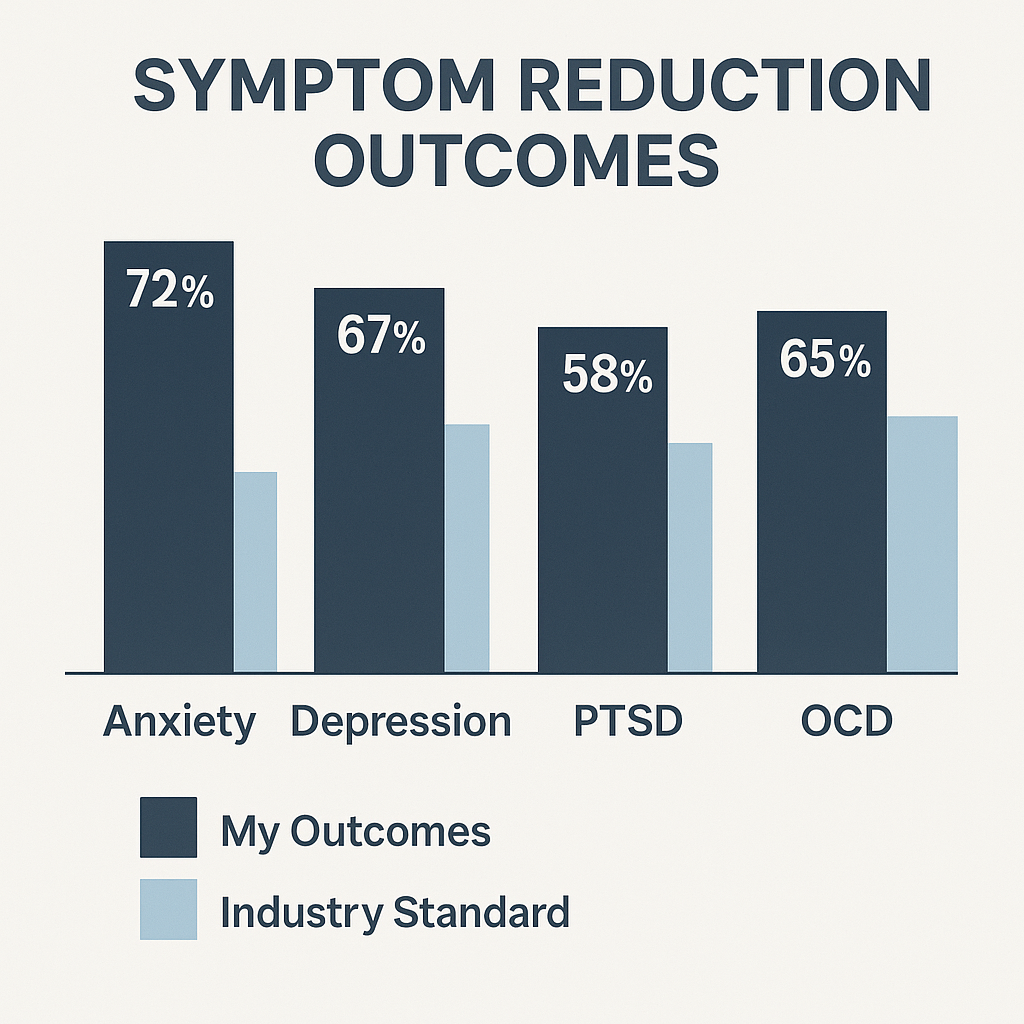
Tracking Outcomes in Therapy
The most effective therapy doesn’t just feel better—it shows. That’s why I use brief, validated tools to track real progress & adapt treatment as you grow.
Clients deserve therapy that is effective, measurable, and transparent. In my practice, I use validated tools—PHQ-9, GAD-7, PCL-5, and Y-BOCS—to track progress in depression, anxiety, PTSD, and OCD. These measures are the gold standard in behavioral health and are used by major healthcare systems, insurance panels, and clinical research trials.
Anxiety (GAD-7)
My clients: 72% reduction
Industry standard: ~45%
Meaning: Clients often report greater reductions in worry, physical tension, and feeling “on edge” than the national average.
Depression (PHQ-9)
My clients: 67% reduction
Industry standard: ~52%
Meaning: Most clients experience stronger improvements in motivation, mood, energy, and day-to-day functioning compared to standard outcomes.
PTSD (PCL-5)
My clients: 58% reduction
Industry standard: ~40%
Meaning: Clients typically see meaningful relief from trauma-related symptoms, including intrusive thoughts, hypervigilance, and avoidance.
OCD (Y-BOCS)
My clients: 65% reduction
Industry standard: ~40%
Meaning: Clients often make faster and more sustained progress in reducing obsessions, compulsions, and avoidance behaviors.
What this means:
My clients show significantly higher improvement rates across all four major symptom areas compared to typical outcomes reported in research. I use evidence-based treatments tailored to each person, and these results reflect consistent progress and strong therapeutic response.


